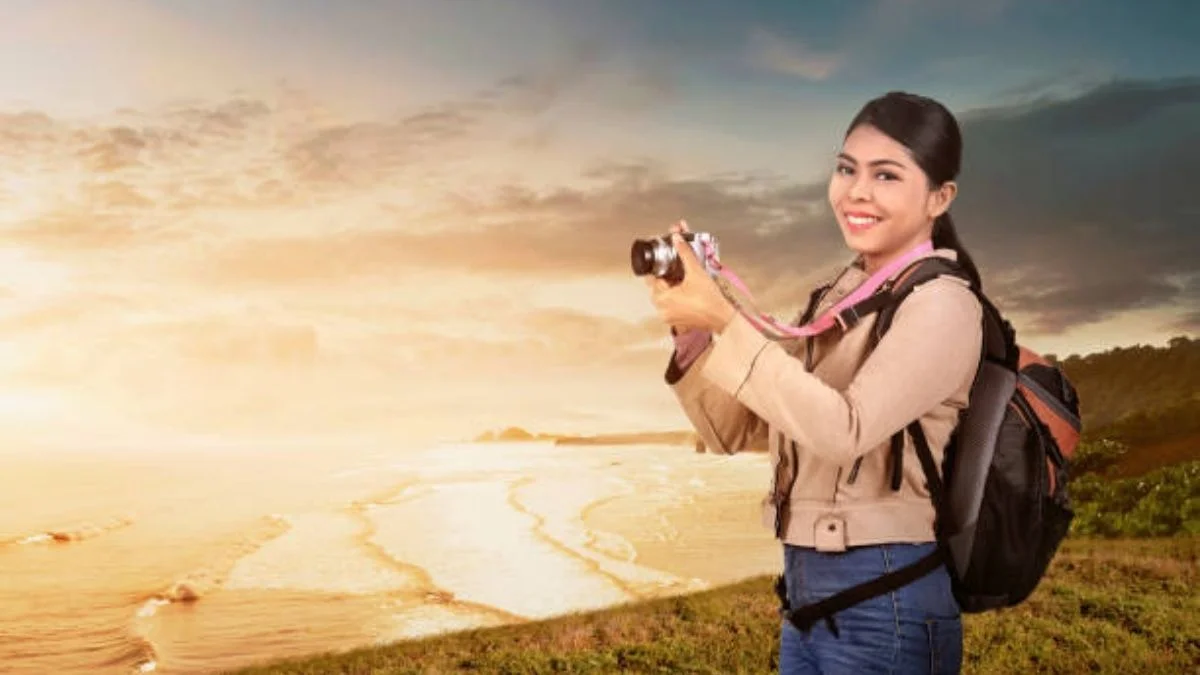GENERAL
How to Capture Stunning Travel Photos Like a Pro

Travel photography is about more than just taking pictures of where you’ve been. It’s about telling a story, capturing the feeling of a place, and creating images that bring memories to life long after the trip ends. The best travel photos make you pause and feel something—whether it’s the warmth of the sun on a quiet beach, the buzz of a crowded market, or the calm of a mountain sunrise. You don’t need to be a professional photographer to take images that stand out. With a bit of attention and creativity, anyone can turn ordinary travel snapshots into art.
When you travel, every setting offers a chance to practice seeing the world differently. You might be walking through narrow European streets at dusk, standing on a glacier in Alaska, or watching waves roll beneath the deck on a Bahamas cruise. Each experience offers a distinct palette of light, color, and motion. The key is learning how to translate those sensations into photos that truly capture what you see and feel.
Understanding Light
Light is the foundation of every great photo. Midday sun may seem ideal because it’s bright, but it often creates harsh shadows and overexposed highlights. Early morning and late afternoon, known as the golden hours, are when natural light is soft and warm. During these times, landscapes glow with depth, and portraits take on a more natural tone.
When shooting indoors or at night, look for soft sources of light rather than direct ones. In a café, that might be a window. On a city street, it could be the reflection of neon signs or lamplight. Paying attention to where the light falls can instantly improve your photos. You’re not just photographing what’s in front of you; you’re photographing how light interacts with it.
Composing the Shot
Composition is what turns an image from ordinary to compelling. The rule of thirds is a useful starting point. Imagine your frame divided into nine equal sections. Placing key elements of your scene along those lines or at their intersections helps create balance. For example, positioning a horizon line in the upper third of the frame gives space to foreground details, making landscapes more dynamic.
Leading lines—roads, fences, shorelines, or even shadows—draw the viewer’s eye through the frame. Patterns, symmetry, and reflections can add interest, while framing your subject with natural elements like archways or trees adds depth. The goal is to guide the viewer’s gaze in a way that feels intentional.
Finding Your Perspective
Many travelers take photos from the same eye-level view, which can make images feel repetitive. Changing your perspective often brings a shot to life. Try crouching low to capture a market vendor surrounded by colorful fruit or climbing a few steps to photograph a courtyard from above. Reflections in puddles or windows can also create surprising compositions.
When photographing people, focus on moments that feel natural rather than posed. A street musician lost in their music or a child chasing a wave often tells a more powerful story than a traditional portrait. The candid, fleeting moments are what make travel photos feel alive.
Capturing Motion and Energy
Movement adds a sense of energy and authenticity to your travel images. To freeze fast motion, such as dancers in a festival or birds taking flight, use a faster shutter speed. If you want to convey movement, like the flow of water or the bustle of city lights, experiment with slower shutter speeds and a steady hand—or a small tripod.
Even the smallest details can suggest movement: a windblown flag, a blurred crowd behind a still subject, or ripples across a calm lake. Motion reminds the viewer that travel is about being part of the living rhythm of a place.
Using Color to Tell a Story
Color influences how we feel about a photo. Warm tones, such as reds and yellows, evoke excitement and energy, while cooler blues and greens bring calm and serenity. When you travel, pay attention to how color defines the mood of each destination.
In the Caribbean, for example, vivid blues and whites dominate, reflecting the clarity of the sea and sky. In a Moroccan market, rich reds and golds fill the frame with life. Capturing those local palettes can make your photos instantly recognizable and emotionally resonant.
When editing, resist the temptation to oversaturate. Subtle adjustments often produce more natural, timeless results. Aim for photos that reflect how the moment truly felt, not just how you wish it looked.
The Importance of Patience
The most memorable travel photos often come from waiting for the right moment. That might mean staying put until the sun dips behind a mountain or waiting for a fisherman to cast a net at the perfect angle. Patience lets you notice details that others overlook.
Spend time observing a place before you lift your camera. Watch how people move, how shadows change, how the light shifts. You’ll often find that the perfect shot reveals itself once you slow down and let the scene unfold naturally.
Traveling Light
While it can be tempting to pack multiple lenses and accessories, traveling light makes it easier to focus on your surroundings rather than your gear. Many of today’s compact cameras and smartphones produce excellent images. A lightweight camera strap, a small tripod, and a portable charger are often all you need.
More important than equipment is your awareness. You can take breathtaking photos with modest gear if you pay attention to composition and light. The most powerful tool in your kit is your eye.
Telling a Story Through Your Photos
Every journey has its own rhythm, and your photos should reflect that. Think of them as chapters in a story: the anticipation of departure, the moments of discovery, the quiet reflections along the way. Try to capture details that speak to the essence of each experience—the pattern of tiles in a historic square, the laughter at a food stall, the play of light through an old window.
Later, when you look back, those small moments will mean as much as the grand vistas. They bring the narrative of your trip to life and remind you of what it felt like to be there.
Bringing It All Together
Photography, like travel, is about curiosity and connection. When you approach each destination with an open eye and a sense of wonder, your photos naturally reflect that authenticity. They become more than souvenirs—they become stories you can share and revisit for years to come.
Whether you’re exploring ancient cities, hiking mountain trails, or watching the sea change colors beneath a setting sun, every place has a unique visual rhythm waiting to be captured. With practice, patience, and a willingness to experiment, you can take photos that don’t just document your travels but express the spirit of adventure itself.
And perhaps that’s what the best travel photography does. It invites others to see the world not just as it is, but as you experienced it—alive, vivid, and full of possibility.
-

 BIOGRAPHY7 months ago
BIOGRAPHY7 months agoBehind the Scenes with Sandra Orlow: An Exclusive Interview
-

 HOME1 year ago
HOME1 year agoDiscovering Insights: A Deep Dive into the //vital-mag.net blog
-

 HOME1 year ago
HOME1 year agoSifangds in Action: Real-Life Applications and Success Stories
-

 BIOGRAPHY1 year ago
BIOGRAPHY1 year agoThe Woman Behind the Comedian: Meet Andrew Santino Wife




























